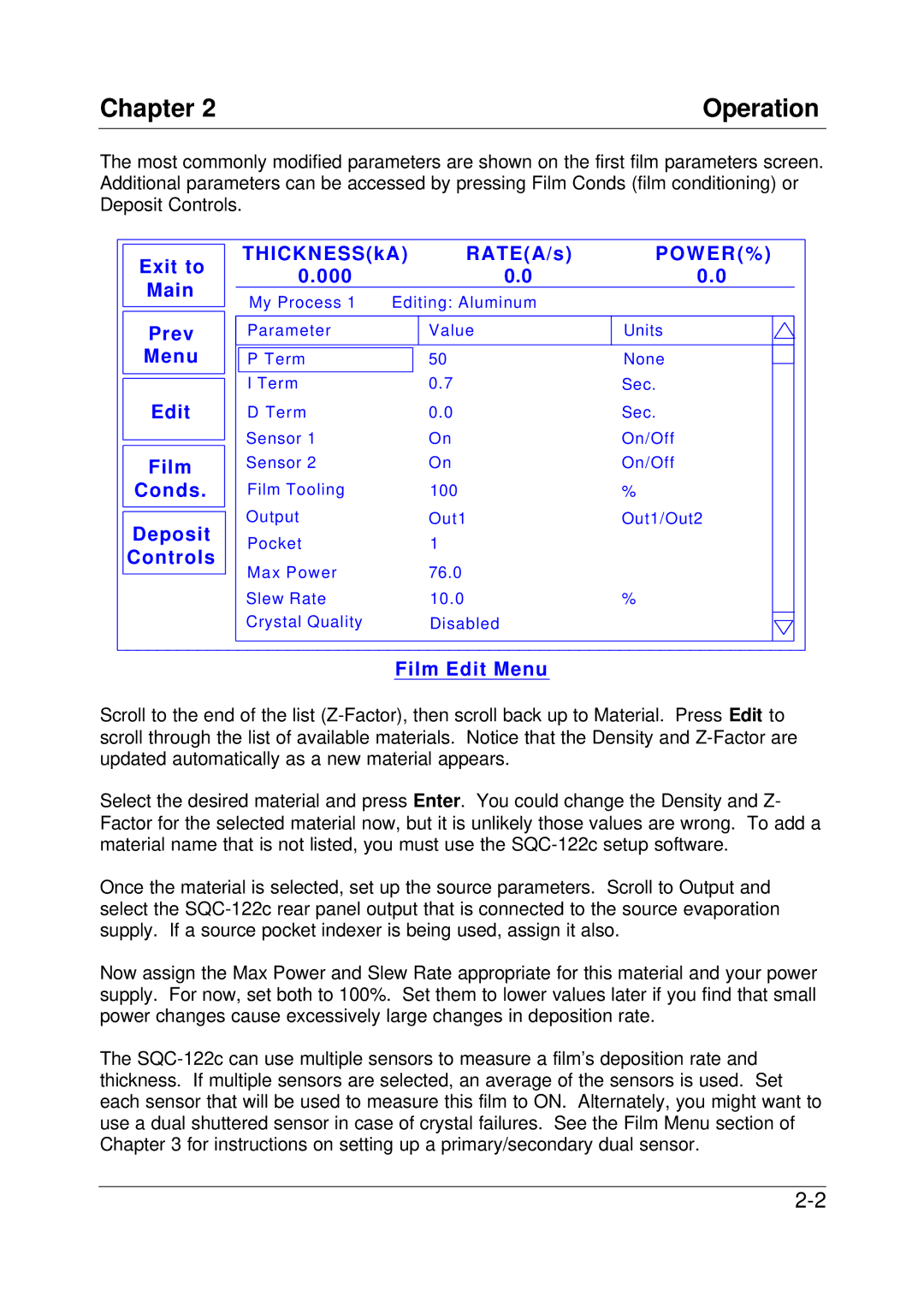
Chapter 2 | Operation |
The most commonly modified parameters are shown on the first film parameters screen. Additional parameters can be accessed by pressing Film Conds (film conditioning) or Deposit Controls.
Exit to
Main
Prev
Menu
Edit
Film
Conds.
Deposit Controls
THICKNESS(kA) |
| RATE(A/s) | POWER(%) | ||
0.000 |
| 0.0 | 0.0 |
| |
My Process 1 | Editing: Aluminum |
|
| ||
|
|
|
|
|
|
Parameter |
|
| Value | Units |
|
|
|
|
|
|
|
|
|
|
|
|
|
P Term |
| 50 | None |
| |
|
| ||||
|
|
|
|
|
|
I Term |
| 0.7 | Sec. |
| |
D Term |
| 0.0 | Sec. |
| |
Sensor 1 |
|
| On | On/Off |
|
Sensor 2 |
|
| On | On/Off |
|
Film Tooling |
| 100 | % |
| |
Output |
|
| Out1 | Out1/Out2 |
|
| 1 |
|
| ||
Max Power |
| 76.0 |
|
| |
Slew Rate |
| 10.0 | % |
| |
Crystal Quality |
|
| Disabled |
|
|
|
|
|
| ||
|
|
|
|
|
|
Film Edit Menu
Scroll to the end of the list
Select the desired material and press Enter. You could change the Density and Z- Factor for the selected material now, but it is unlikely those values are wrong. To add a material name that is not listed, you must use the
Once the material is selected, set up the source parameters. Scroll to Output and select the
Now assign the Max Power and Slew Rate appropriate for this material and your power supply. For now, set both to 100%. Set them to lower values later if you find that small power changes cause excessively large changes in deposition rate.
The
